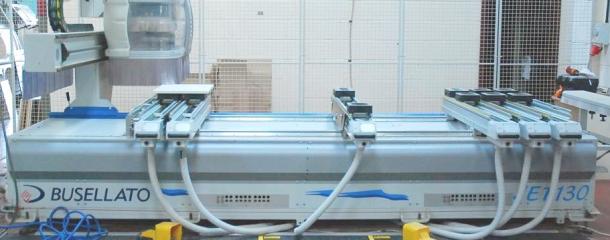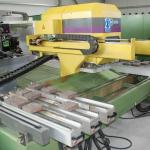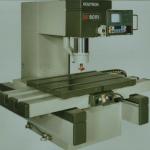Cantilever machineTechnical term for a type of CNC machining centres and routers with the working spindle and other units attached to a cantilever. ConstructionThis technical type has its origins in the mechanical routers and today is more used for small, not too heavy machines. The advantages are a space-saving design, high flexibility (due to this construction one side is open, so bigger workpieces can be put on the table) and a cost-effective construction. Structurally-dependent the rigidity continuously decreases to the end of the cantilever. Therefore this type of design has its limits where large workpieces should be processed with high precision and high power. Variants
Special type since the early 2000sThe cantilever at its end is stabilized by a support moving on prismatic guides, looking like a moving gantry. This allows a higher rigidity of the cantilever with the same material cross section. See also: |
CNC machining centres, robots894
Edgebanding, edge processing627
Saws, cutting machines436
Planers, 4-sided moulders186
Routers, shapers, tenoners, profilers181
Drilling, mortising machines134
Presses, clamps, joining machines201
Sanding machines320
Mechanisation, storage, packing technology199
Surface coating152
Production lines127
Heating, drying, waste chopping63
Dust extraction, compressed air, vacuum140
Assembly, worktables15
Lathes29
Tools, sharpening technology91
Equipment, Other machines131



